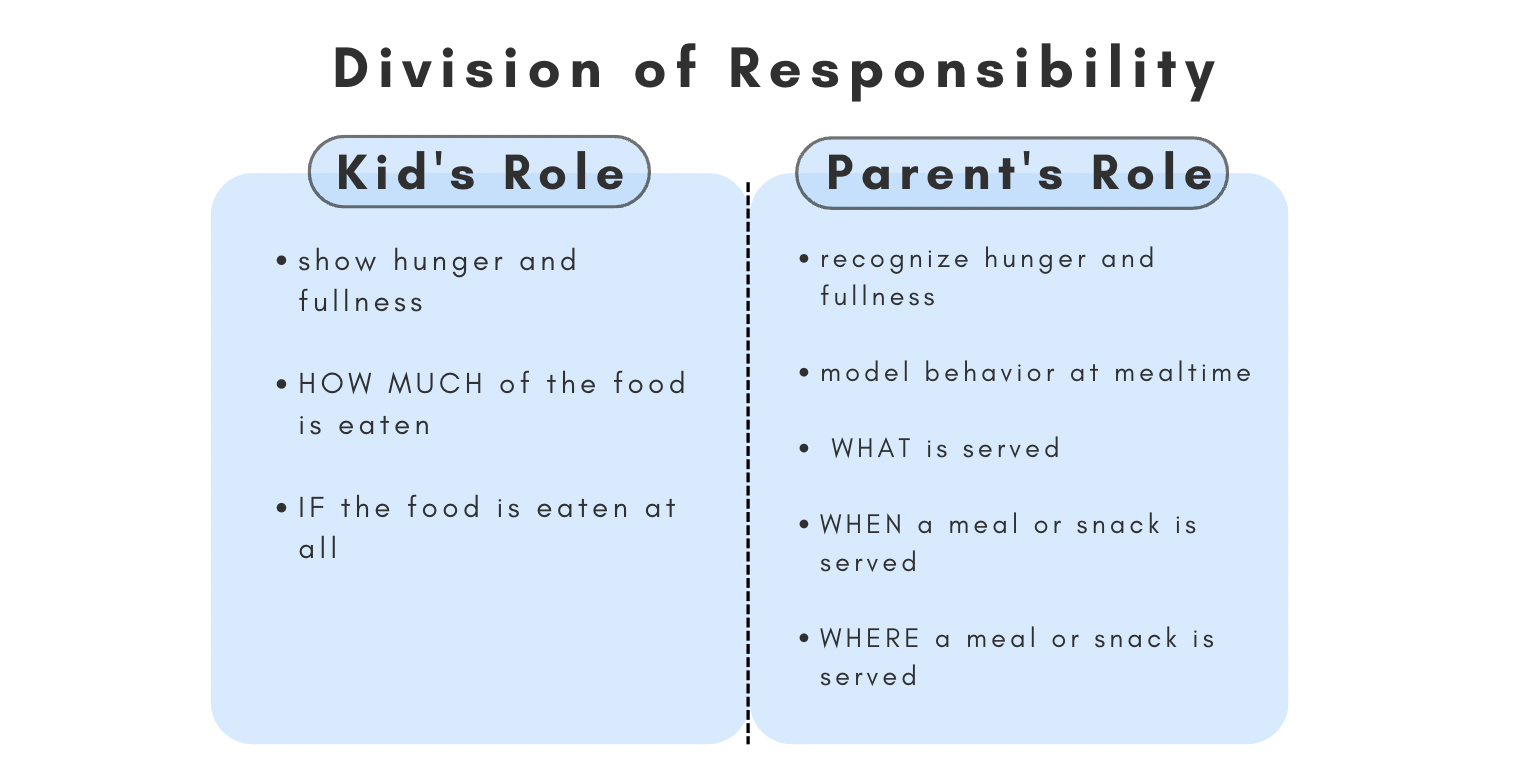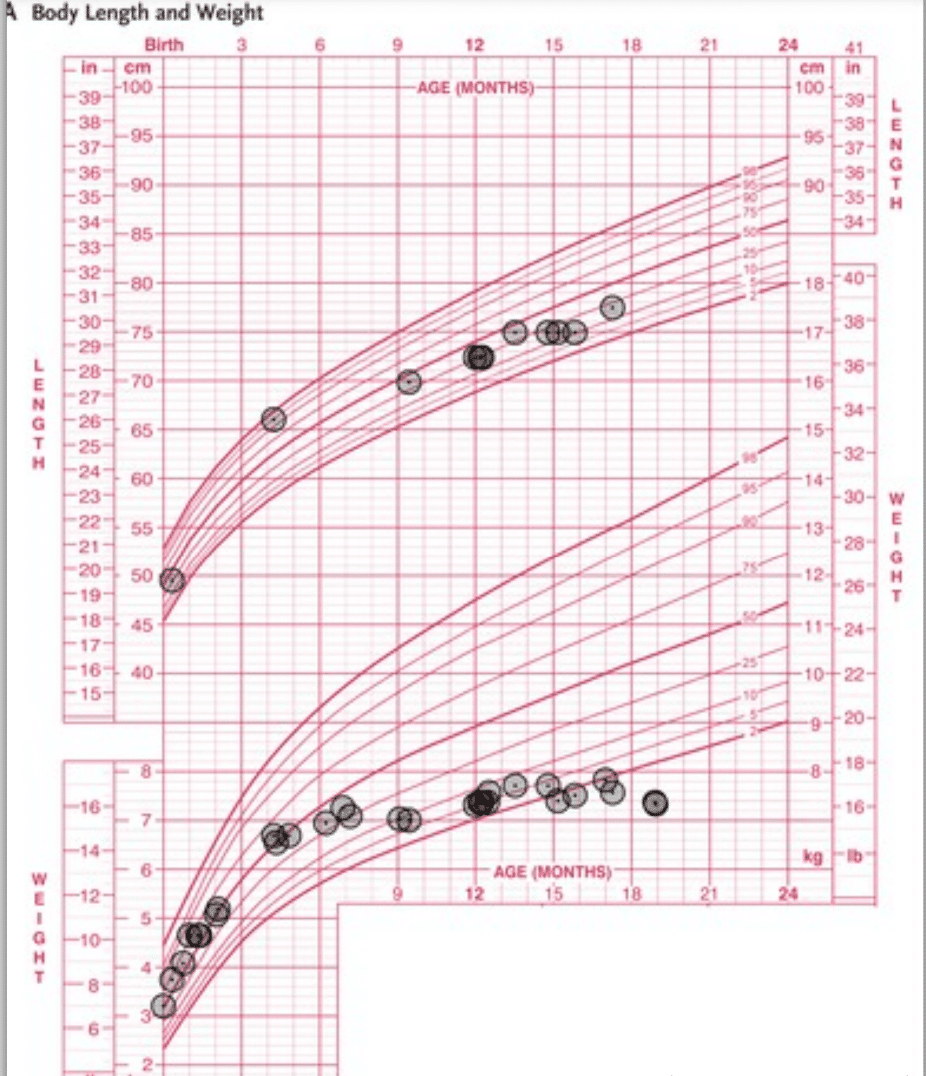“Is my toddler eating enough? Are they eating too much?”
“How do I know when it’s okay for my toddler to stop eating?”
One of the most common concerns I hear from parents is about whether their child is eating too much or not enough. This worry usually leads to parents feeling the need to “over perform” at mealtimes – complying with every food request and pleading with their kids to take another bite.
OR it can cause us to unnecessarily restrict foods or use foods as a reward system. Either way – it’s exhausting!
Not to mention that toddlers don’t have the most reliable temperament. The constant changes in emotions, their food preferences forming, and growth spurts all make it difficult to identify how much food a toddler should be eating.
So to fight against the confusion, let’s get to 5 easy ways to know if your toddler is eating too much.
Overfeeding is on the Rise
With obesity rates in children rising to 19.7%, overfeeding during childhood is becoming an ever-present issue (1). Toddlers that are consistently overfed are less able to understand their hunger and fullness cues later in life, leading to obesity (2).
Overfeeding usually happens for two main reasons (3):
- When food or a bottle is the only way the toddler is soothed. This teaches the child to rely on food as an answer to stress/sadness, rather than listening to hunger or fullness.
- When a child is encouraged and even directed to finish their food despite being full. The comes in the form of “you can’t leave the table until your plate is empty” or “you can’t play outside until your finish your snack”.
This is where the “Feeding Catch 22” occurs. Parents are worried their toddlers are not eating enough, but constantly insisting that their child should eat can actually make them NOT want to eat. This happens because children learn not to listen to their own hunger and fullness cues.
But do not fear! Being more aware of your toddler’s hunger and fullness cues can help you become a more educated, calm, and confident parent.
Let’s get into the tips!
1. Know the Signs of Fullness
Fullness cues become more diverse or different after 6 months of age. Because this is also the time solid foods can be introduced, things can get confusing.
However, there are several signs of fullness to watch for in your toddler (3):
Early signs of fullness:
- Hand-to-face
- Does not open their mouth until the spoon is at their lips
- Increased interest in surroundings and looking away from food
- Turning head in response to food
- Not maintaining eye contact with the caregiver
Active signs of fullness:
- Pushing away food
- Turns away abruptly
- Falling asleep
- Refusing to open mouth
- Biting spoon/nipple
Late signs of fullness:
- Crying
- Sleeping
- Physically struggling/arching body
- Vomiting
2. Know the Signs of Hunger
The average feeding schedule for a toddler is eating a meal or snack every three hours. This means that meals and snacks should hopefully get them through the entire three hours.
If you feel that your toddler can never make it for the entire three hours, you might want to focus on increasing the protein content in each meal or snack. Protein gets digested slowly, so it helps keep your toddler fuller for longer. Click here for great high protein snack options.
The lack of these hunger signals between meals and snacks is a great way to assure they are eating enough during feeding times (3).
Early signs of hunger:
- Sucking
- Opening/closing mouth repeatedly
- Smacking/licking lips
- Increased alertness
Active signs of hunger:
- Rooting/nuzzling
- Asking for food
- Excitory limb movement
- Motioning to be placed in feeding position
- Fidgeting or squirming
Late signs of hunger:
- Moving head frantically from side to side
- Crying
- Temper Tantrum
3. Trust your Toddler
I know this is a tough one, but it can also be the most important! We want to promote eating ONLY as a response to hunger. Not as a reward. And stopping eating ONLY when you’re full.
And the great thing it – kids actually do that pretty well naturally! But if we prompt too much, kids will experience pressure around meal times. This results in an inability to listen to their own hunger cues.
The best way to combat this is to uphold the division of responsibility (4). This is the idea that we must acknowledge what kids and parents are each responsible for at meal times. This method helps children learn to self-regulate and promotes a more stress-free food environment for both the kids and parents.

However, this only works if both ends of the agreement are upheld (4). The most important element here is parents taking leadership of the meal schedule. This is done by setting firm boundaries on when food is offered and when it’s not. Then, give kids autonomy within the set meal schedule. It’s all about YOU choosing when to give THEM choice.
4. Language at the Table Matters
As I’ve mentioned previously, the number of times you prompt a child to eat and how you prompt a child to eat can drastically impact their relationship with food.
A study of over 1200 toddlers found that “intrusive and assertive prompts” during mealtime are directly related to increased weight (5).
“Intrusive prompts” are comments that pressure the child with timing, don’t give the child a choice, or frequently interrupting with suggestions. Things like “hurry up” or “you need to eat your snack before I drop you off at practice”.
Assertive prompts are defined as directing a child to do something rather than asking open-ended questions. These directive commands do not let the child form their own opinions.
Rather, the avoidance of intruding on how much toddlers ate was correlated with kids using hunger as their only cue for eating (4). Overall, focus on commenting minimally on toddlers’ food intake. And when commenting, use open-ended suggestions that do not correlate “good” or “bad” behavior with food intake.
Some examples are:
“My snap peas are super crunchy today, what do yours sound like?”
“I love how creamy this peanut butter is. What do you think?”
“The meal is about to end. Can you take a look at your plate to make sure you got what you need?”
5. Track your Toddler’s Growth
From the first-year pediatrician checkups, you are probably familiar with a growth chart. This curved graph plots your child’s growth based on their height and weight. It also puts their growth in reference to other kids with similar height and weight by the “percentile lines”. These graphs can often be intimidating and scary, especially if we don’t use them correctly.

To be very clear – your child’s growth is completely normal if they are growing consistently. EVEN if their plotted line is lower or higher on the chart. The only time to become concerned is if weight or height takes an abrupt shift up or down on the curve. However, your child plotting on the 90th percentile curve is not “better” or “worse” than on the 20th percentile.
Consistently tracking your child’s growth, especially for the first two years of life, is a great way to ensure they are eating enough.
I hope these tips and tricks make you feel more confident in knowing if your child is eating too much or not enough.
For more information on how to navigate your child’s eating, check out our picky eating page with endless resources! Or subscribe to the newsletter for weekly resources, meal ideas, and recipes for kids.

Pingback: 10 Ways to Increase Your Kid’s Calories - The Pediatric Dietitian
Pingback: How to Handle Your Toddler Spitting Out Food